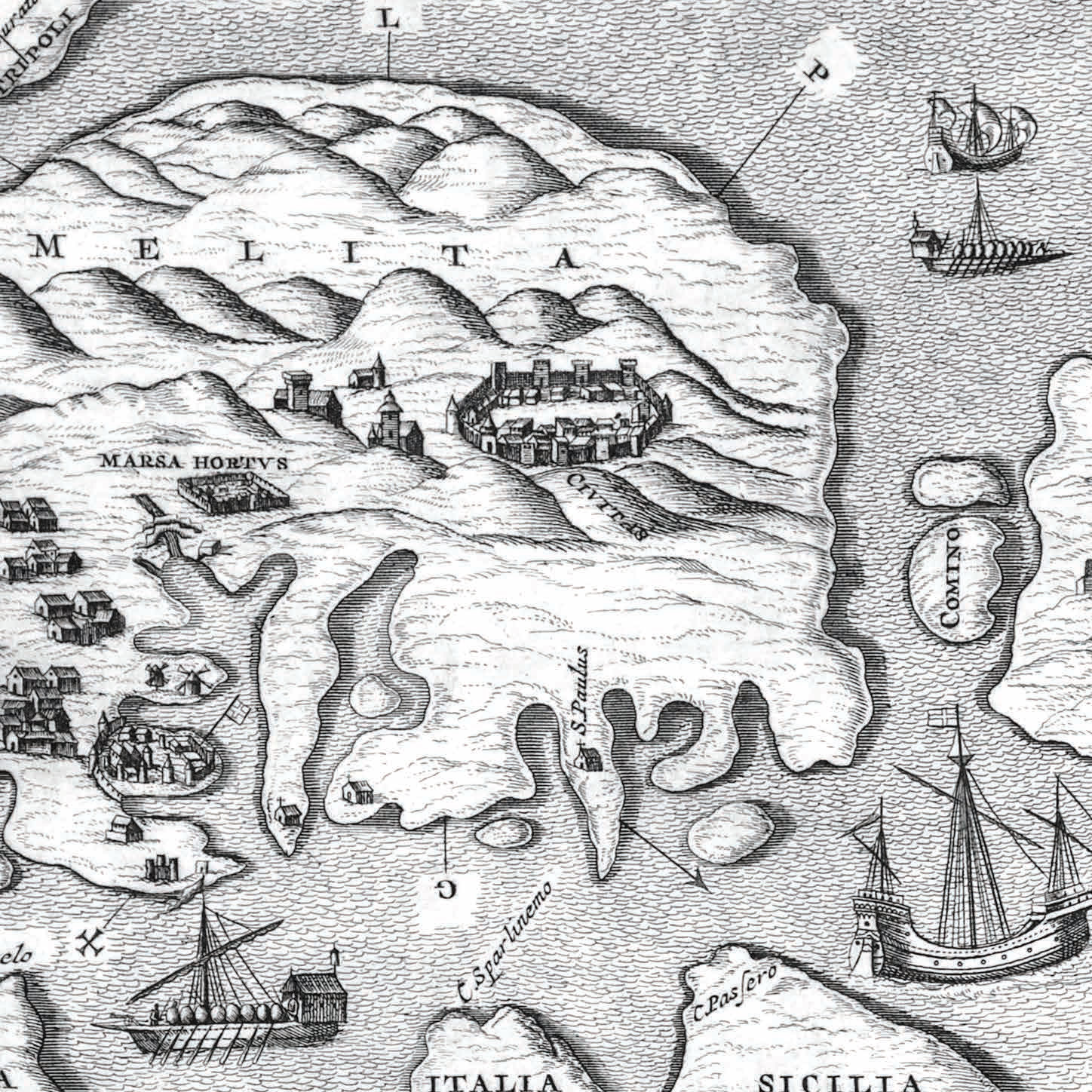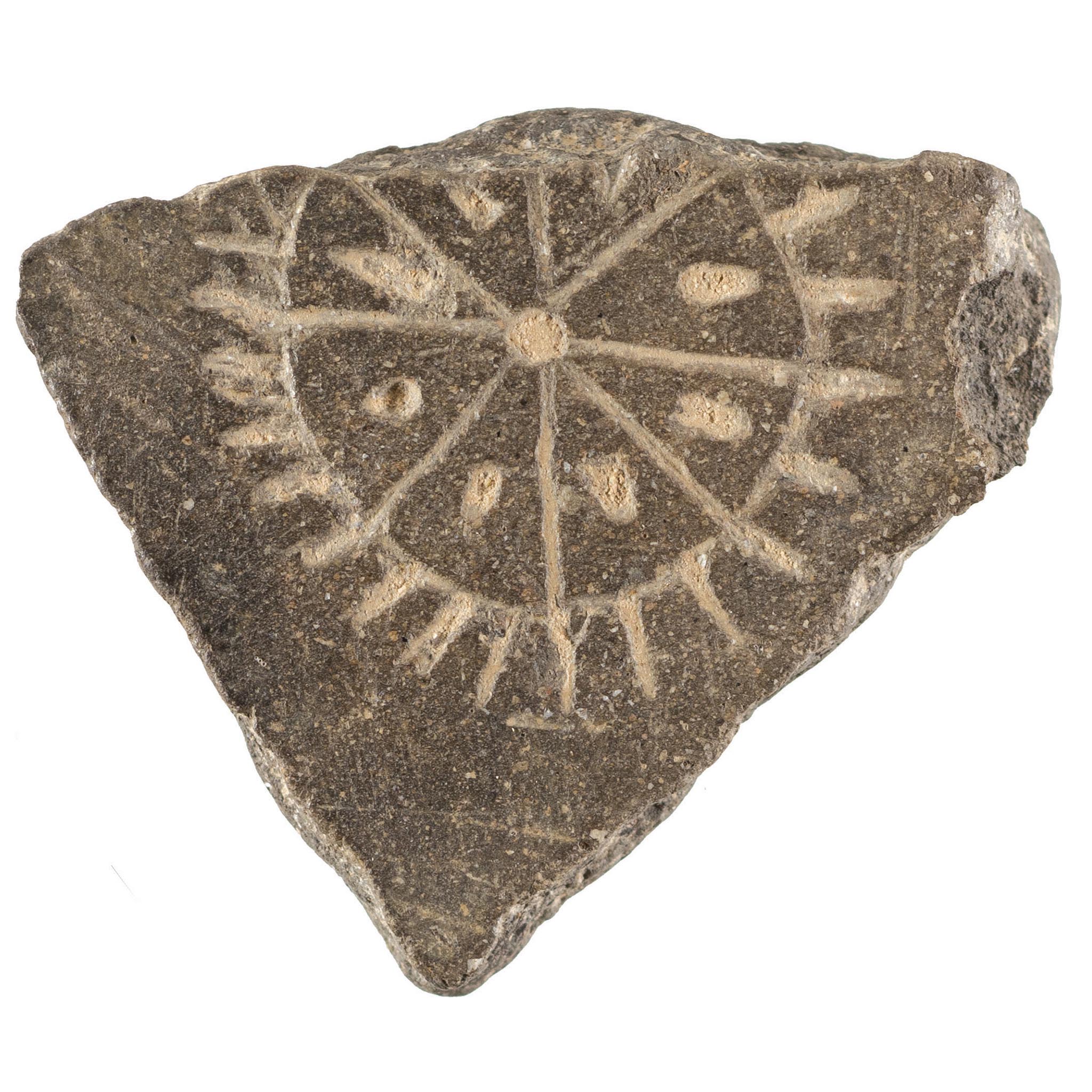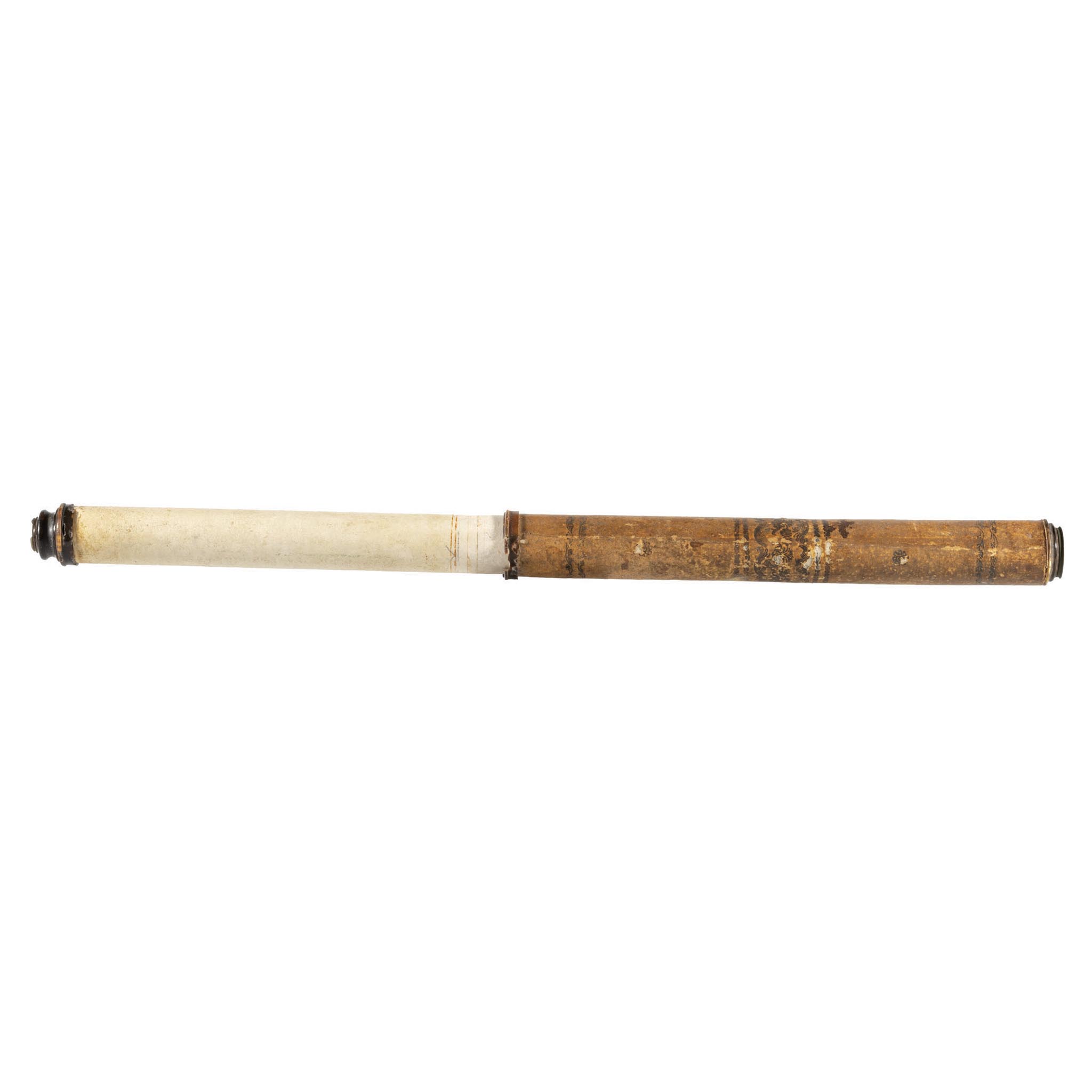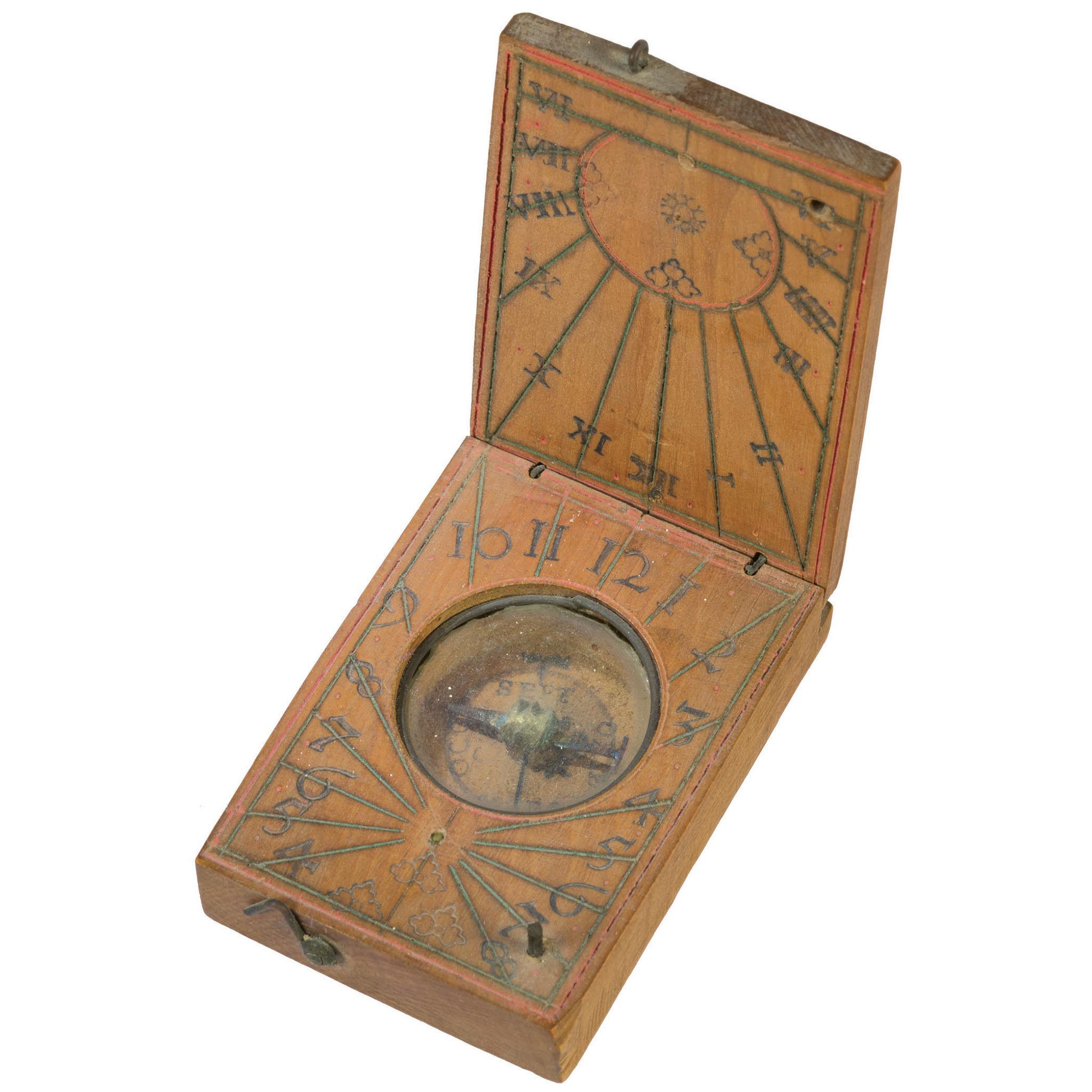The nocturnal is an astrolabe for telling time at night or for determining latitude by the position of the stars in relation to Polaris (Alpha Ursae Minoris). Time could be read at time thanks to this instrument by observing the position of the brightest star in the constellation of Urs Minor, commonly known as the North of Pole star. Polaris includes the main star (Polaris Aa) in orbit with a smaller companion (Polaris Ab). Polaris B was discovered in 1780 by William Herschel long after the nocturnal on display in this exhibition and its purpose became obsolete with the introduction of the marine chronometer in the 1760s.
The earliest known image of a nocturnal can be traced back to a twelfth-century manuscript. Cosmographicus Liber (1530) by Peter Apianus and Martín Cortés de Albacars Arte de Navegar (1551) also feature interesting examples of nocturnals. Nocturals were made either of brass or of wood. Examples found in wreck excavations have augmented the already known examples. Surviving noteworthy exemplars include the brass version by the Florentine Girolamo della Volpaia in the Museo Galileo (Florence) dated 1568, formerly in the Medici Collection, and an almost intact version in wood at the National Maritime Museum (Greenwich), which is probably of French manufacture and dates to 1588.
The Malta Maritime Museum exemplar, here displayed and being published for the first time in this exhibition catalogue, is one of a very small group of nocturnals or near-complete versions conserved in museums worldwide given that the only missing pieces are its suspension loop and sundial gnomon. The example features a series of disks, known as volvelle, mounted on and held together by a bolt and three ray nut attached to a main disk and handle. The only missing component is the suspension loop. The bolt-and-nut attachment is more common in the assembly of astrolabes, and this makes this example even the more a rare example.
Nocturnals should not be confused with astrolabes used by navigators to determine local latitude at a given position at sea or land. The obverse side features four divisions of 90° each on the main disk with a slide chart or volvelle, marked in the centre with two sets of sundial hour lines, from 1 to 12, marked as Hora ante Meridiem and Hora post M(e)ridiem. This is also known as the Tabula Solis Motus or ‘table of the sun’s motion’ and would show the mark of the sun’s rays on the 12 zodiac signs at the outer edge of this volvelle. When unbolted and turned around, an engraved three sided square-like scale of as-yet-undetermined use can be seen on this volvelle.
The reverse side of the instrument is the nocturnal mechanism proper. The zodiac scale is engraved on the outermost edge of the main disc with the 12 zodiac signs, complete with their symbols and Latin names in full, inserted in between a series of sub-divisions in degrees adding to 360°. The months of the Julian calendar are engraved further in, again with their Latin names inscribed in full. The date scale is divided into three ten-day sections per month. A toothed rotatable disk, the volvelle, is subdivided into two sets of anti-clockwise 12-hour markers, each tooth marking the full hour. Each hour is subdivided by four quarter-hour marks with a longer tooted pointer at 12 hours (midnight) engraved with the word “Index. An arm rotating over it, marked by the engraved words Stella Obseruanda, is interspaced with a hole representing the bright star showing off engraved rays. The circular pivot of this arm is also engraved with the words Stella Polaris and the date 1574.
The correct function of this instrument is still elusive but we can presume how it worked. In order to read the time correctly, the nocturnal would be held from its handle, much like a hand-mirror, with the disks above the user’s hands. The correct date was set, and the Polar Star sighted through the index arm observation hole. The correct time was set at the point when the arm crossed the marked disk.












